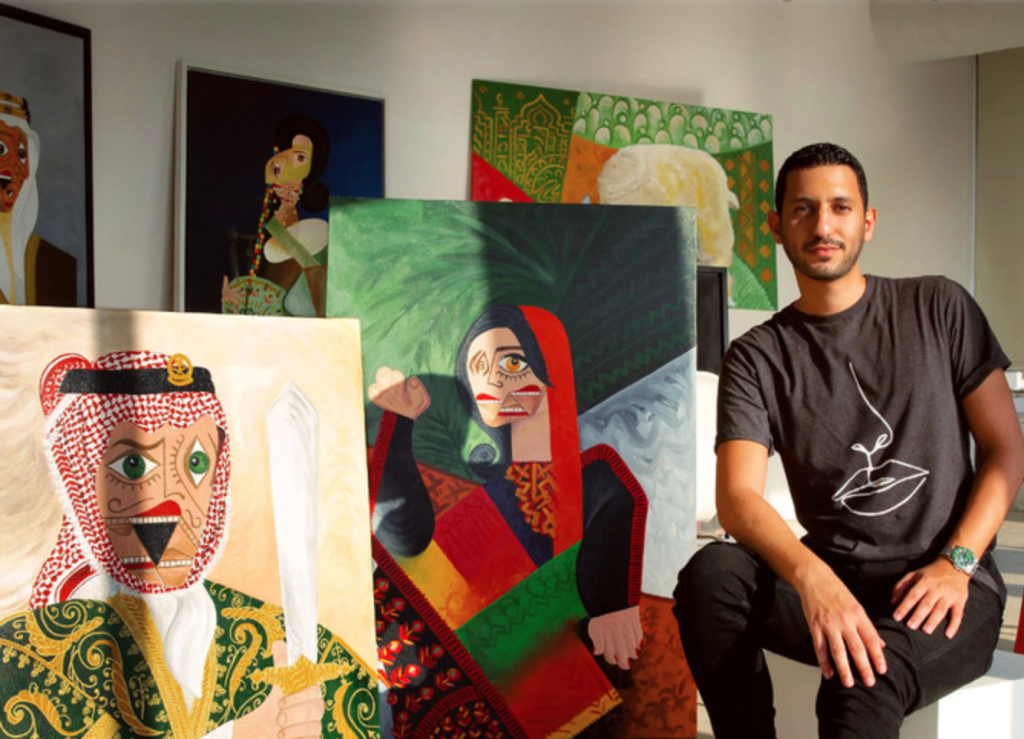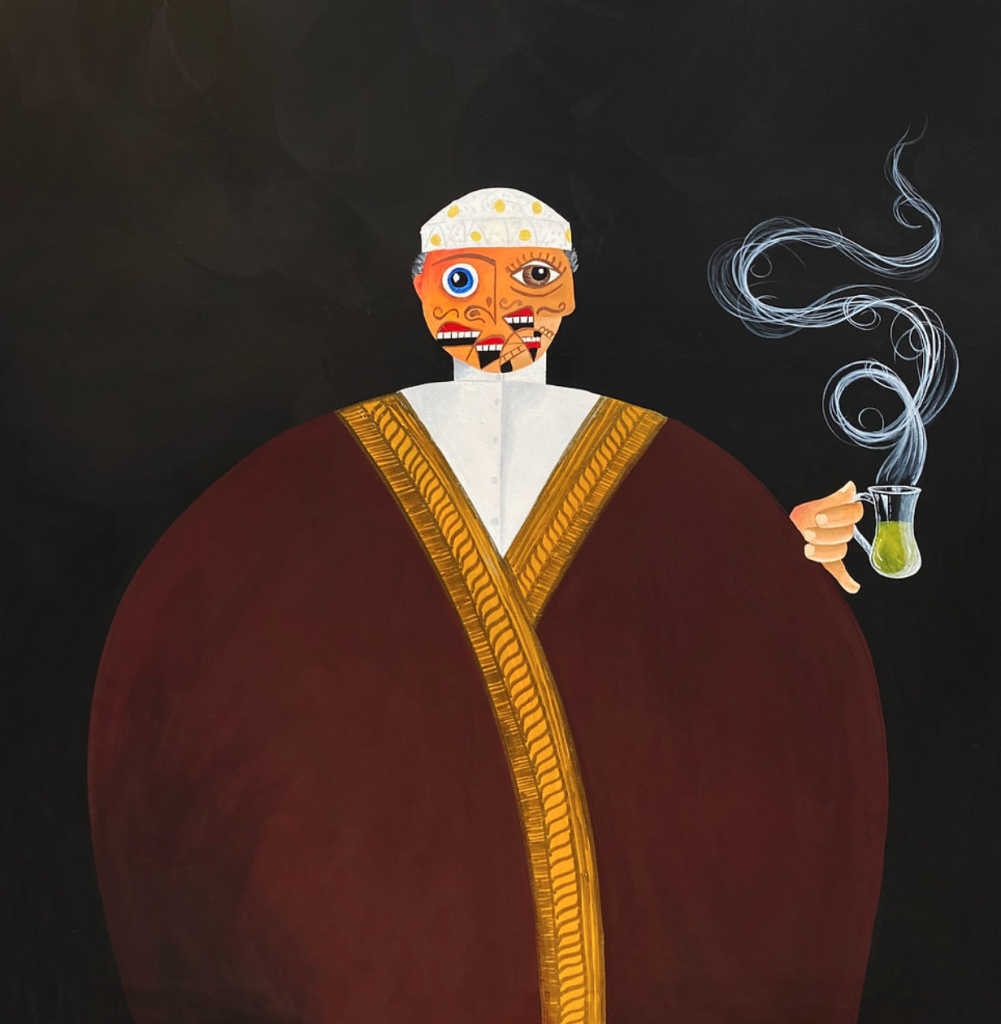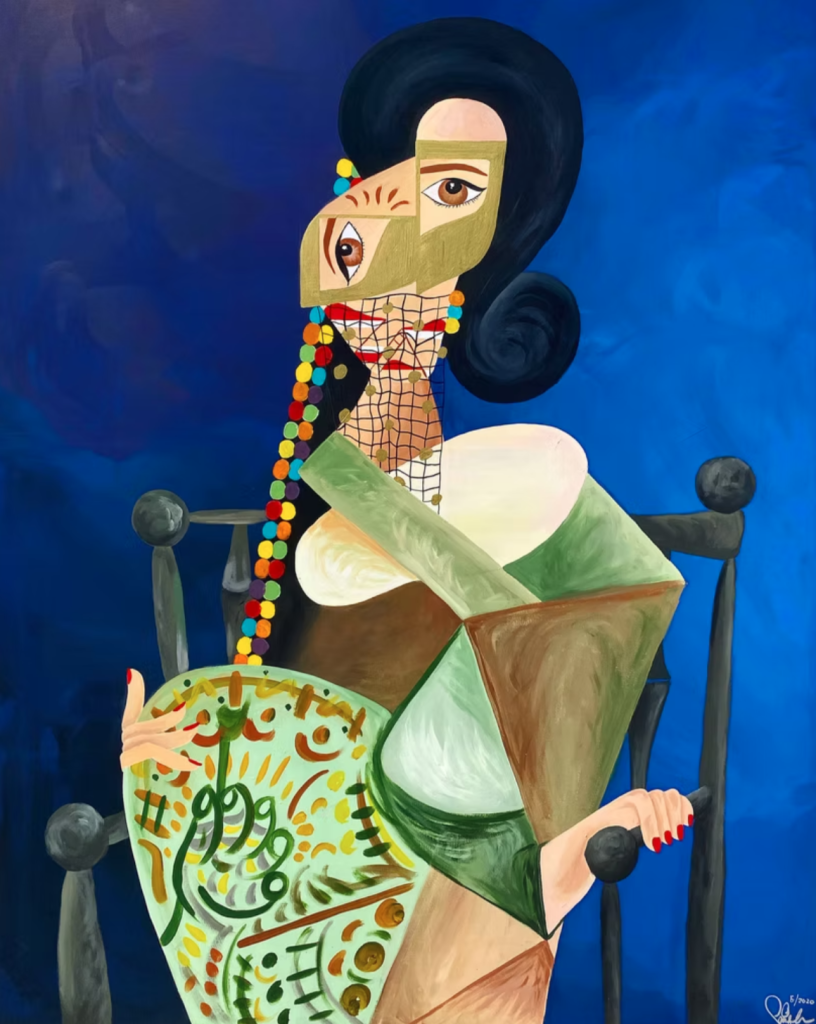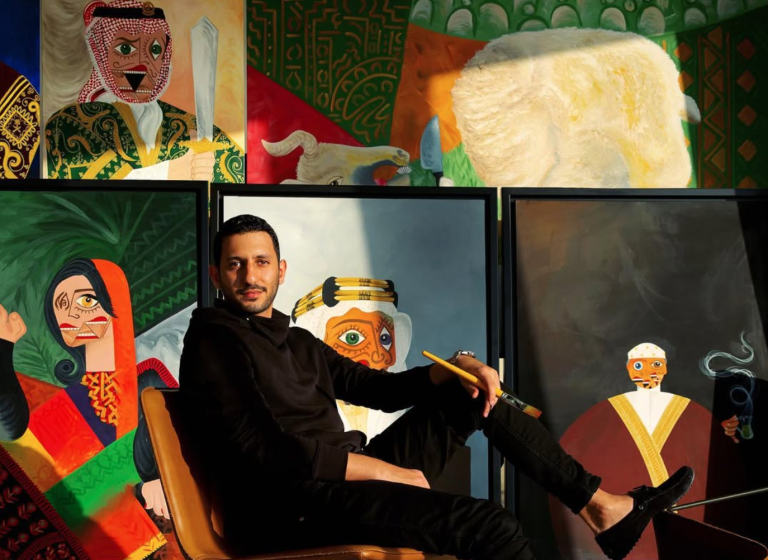When Saudi artist Faisal Alkheriji first picked up a brush at the age of six, he didn’t imagine that those early sketches would grow into a visual language capable of bridging cultures. “I started drawing when I was about six,” he recalls. “Those early classes lit the spark. A few years later, I saw surreal art on TV—Michael Godard—and it pushed me to experiment beyond what I learned in class. That curiosity never left.”
Today, Alkheriji‘s work stands out for its fusion of Cubism and Saudi tradition—fractured yet deeply rooted, global yet unmistakably local. His canvases are layered with meaning, speaking both to memory and to the modern moment.

Culture Through Cubism
As a child, Alkheriji was fascinated by Picasso’s ability to break down reality and rebuild it. “I copied Picasso to understand how he fractured form and still told a clear story,” he says. “That process—deconstructing and rebuilding—felt exactly right for expressing my own culture in a new way.”
His discovery of Cubism wasn’t just an artistic revelation but a way to find voice and structure. He sees his work as part of a dialogue between global influence and personal identity: “I’m very open about my influences—Picasso, surrealism, and broader global art—but the anchor is always Saudi. I use those languages to ‘represent culture differently,’ not to replace it.”
In Alkheriji‘s world, Cubism isn’t an import—it’s a tool to translate homegrown stories into universal form. “The result,” he says, “is a Saudi voice speaking in a global visual dialect.”

Fragmenting Familiarity
Alkheriji‘s paintings are filled with familiar gestures and cultural codes. “Hospitality and dress are constant,” he explains. “Coffee rituals, gatherings, and traditional garments appear as fractured, recurring shapes. I also pull from vernacular patterns like sadu and details linked to everyday customs.”
But his use of these elements isn’t nostalgic. Instead, he reshapes them, creating a tension between recognition and reinvention. “Cubism lets me preserve the essence while shifting the form,” he says. “Keeping what’s recognizable but inviting a new reading of it—that’s how I reconcile memory and modern life.”
That delicate balance defines his process. “I choose anchors of identity—hospitality, attire, gathering—then fragment secondary details so the viewer reconstructs meaning,” he explains. “It’s a balance of clarity (so it reads ‘Saudi’) and abstraction (so it feels contemporary).”

The Geometry of Belonging
Much of Alkheriji’s art begins not with shape but with story. “Usually a story or moment,” he says. “Ramadan dinners, social scenes—then I break it into shapes and rebuild. I sketch forms that echo objects or garments, then refine the geometry until the narrative clicks.”
Themes of community and shared experience recur constantly in his work. “Hospitality, community tables, and ceremonial dress recur a lot,” he says. “They’re powerful symbols of how tradition adapts to modern life—something I keep revisiting from different angles.”
This interplay between story and structure also shapes how audiences respond. “Locally, people enjoy spotting the codes in gestures, clothing, table rituals,” Alkheriji notes. “Internationally, viewers connect to the universals—family, hospitality—and then discover the specifically Saudi references. The dual read, familiar then specific, is intentional.”

Keeping Memory Alive
For Alkheriji, abstraction isn’t about escaping meaning—it’s about keeping it alive. “It keeps the story alive by changing the performance,” he says. “Abstraction lets us carry memory forward without freezing it—so heritage stays active rather than archival.”
He sees himself as part of a growing wave of Saudi artists embracing new forms without abandoning cultural depth. “The field is broadening,” he explains. “There’s room for figuration, calligraphic traditions, and abstraction. My lane uses abstraction to document change, but it’s part of a larger, very diverse movement.”

New Horizons?
As Alkheriji’s work continues to evolve, he remains committed to refining what he calls the “Saudi-Cubist” language. “I’m continuing to evolve the Saudi-Cubist language across new subjects and collaborations,” he says. “Building on past exhibitions and media features while pushing the geometry and storytelling further.”
Asked how he hopes viewers will feel standing before his paintings, he answers without hesitation: “First—curious and invited in. Then, recognized. I want a Saudi viewer to feel seen, and a global viewer to feel included, both piecing the fragments into their own reading.”
And if Picasso were alive to see his work? “I hope that he would like it, but most importantly, I hope that he would enjoy learning about the Saudi culture in his language—pure abstract art.”
WE ALSO SAID THIS: Don’t Miss… Dubai to Unveil a Floating Museum of Art Hovering Over the Creek



